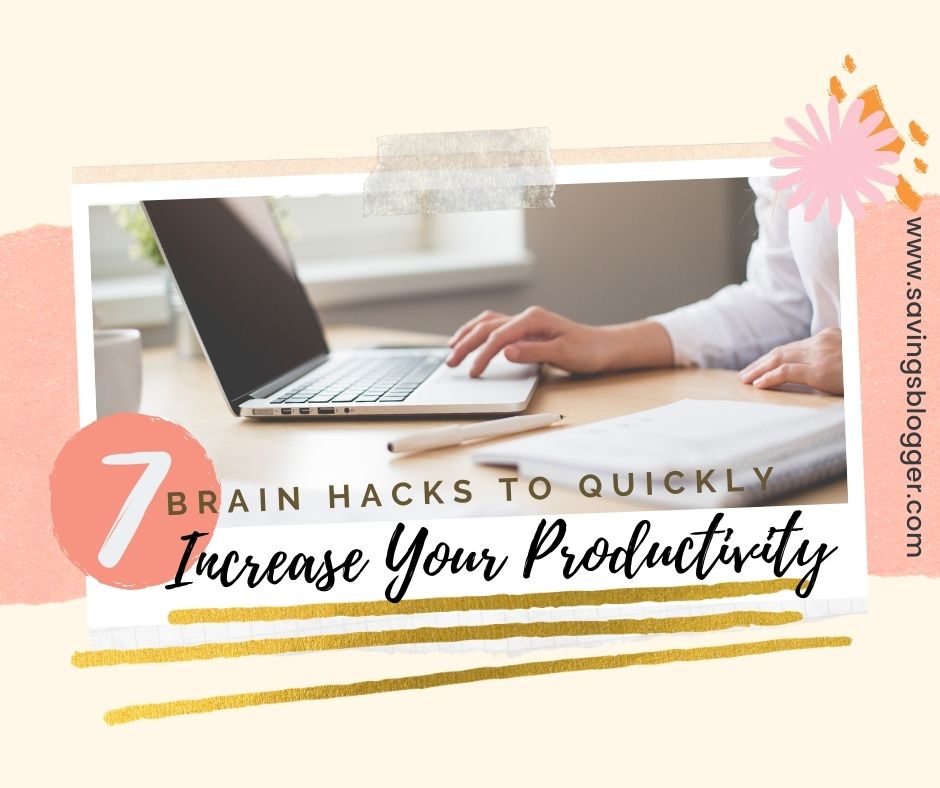Struggling with productivity? Not getting enough done during the day.
Let’s face it, there are only 24 hours in a day and when you’re working as a solopreneur every single minute counts. But what if you are working non-stop yet nothing seems to be getting done. Maybe you need to re-strategize and try something new.
In this article, I want to walk you through some very specific actions that you can take right now to help boost your mental power so that you can actually get more done during the day and give yourself more time off.
1. Take Regular Breaks
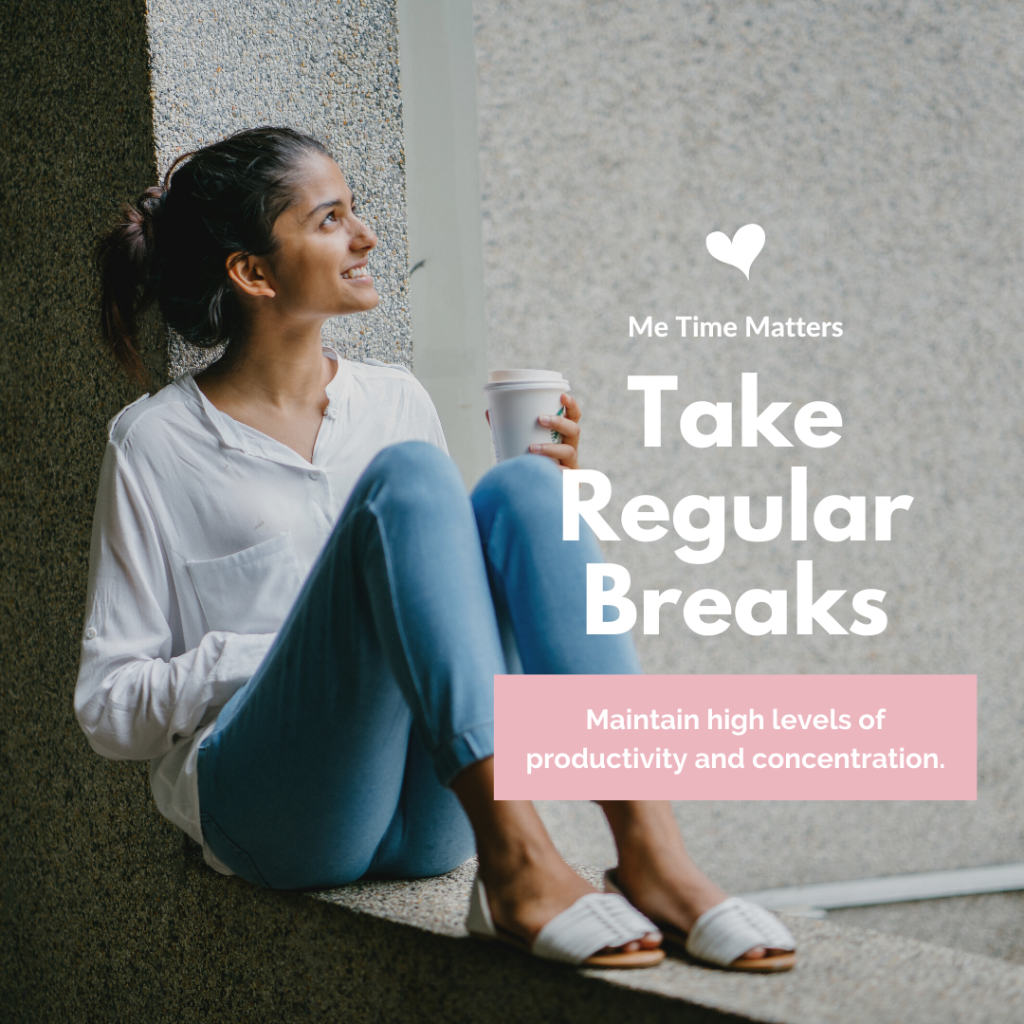
Taking regular breaks during your workday is extremely important to maintain high levels of productivity and concentration throughout the day.
Now before I move forward, I want to dispel a common myth. Some people say that they are worried about taking too many breaks, because they think that they are going to get behind in their work. The truth is actually the complete opposite of this. If you work for long periods of time without taking a break your concentration will lag, which then negatively impacts your productivity. Therefore, you get a lot less done during the day.
So, let’s move forward and take a look at when and how many breaks you should be taking.
We should be taking a break every 75 to 90 minutes.
Pozen
In an article by Stephanie Vozza, she cites Pozen who suggests that we should be taking a break every 75 to 90 minutes. Essentially this means that you would work on a task without disruption for approximately 1 to 1.5 hours and then break.
The length of your break can vary to some degree.
If you follow the Pomodoro Technique, which I have talked about in a previous article, then you are working in 25-minute blocks separated by 5-minute breaks. And then a longer break of 15-20 minutes after you have completed four blocks.
Another common method is the 52/17 rule. That is working 52 minutes on a specific task and then taking a 17-minute break.
This ideology comes from a social networking company called Draugiem Group, who conducted an experiment using a time tracking productivity app called DeskTime. They wanted to see the habits of their most productive employees. What they found was that the 10% of their employees who had the highest level of productivity didn’t actually work longer hours, but in fact we’re taking regular breaks throughout the day. In reality they didn’t even work their full 8 hours as they were taking these increments of 17-minute breaks for every 52 minutes that they had worked.
What does this tell us?
The secret of retaining the highest level of productivity over the span of a workday is not working longer, but working smarter with frequent breaks.
julia gifford, the muse
Julia Gifford in The Muse, wrote that it turns out the secret of retaining the highest level of productivity over the span of a workday is not working longer, but working smarter with frequent breaks. Essentially the employees who had the highest level of productivity were working these 52-minute blocks with an intense purpose, then rested up with their break, allowing their brains to rejuvenate and prepare for the next work period.
How long should you break for?
The answer is … it depends. What you need to do is figure out what works best for you. Personally, what I have found is that my breaks are dependent on the task that I am working on. For the most part however, I do follow the 52/17 rule. I find that working intensely for approximately one hour and then taking a short break keeps me moving productively throughout the day.
Of course, you have to factor in approximately 45 minutes to one hour for a lunch break. So, if we break this down for an entire day it’s a few hours with a few shorter breaks, a longer break, and then back in the afternoon for a few more hours with a few shorter breaks.
The important thing is to experiment with different break frequencies and durations. Find the best option that works for you. Don’t worry about the minutia. It does not matter whether your break is 17- minutes or 25-minutes, or even just five minutes. What’s more important is that you get up from your desk at certain intervals during the day to give your brain a rest. Once you have discovered what works best for you stick with that. And most importantly find tools that help you achieve your goal.
2. Drink Plenty of Water
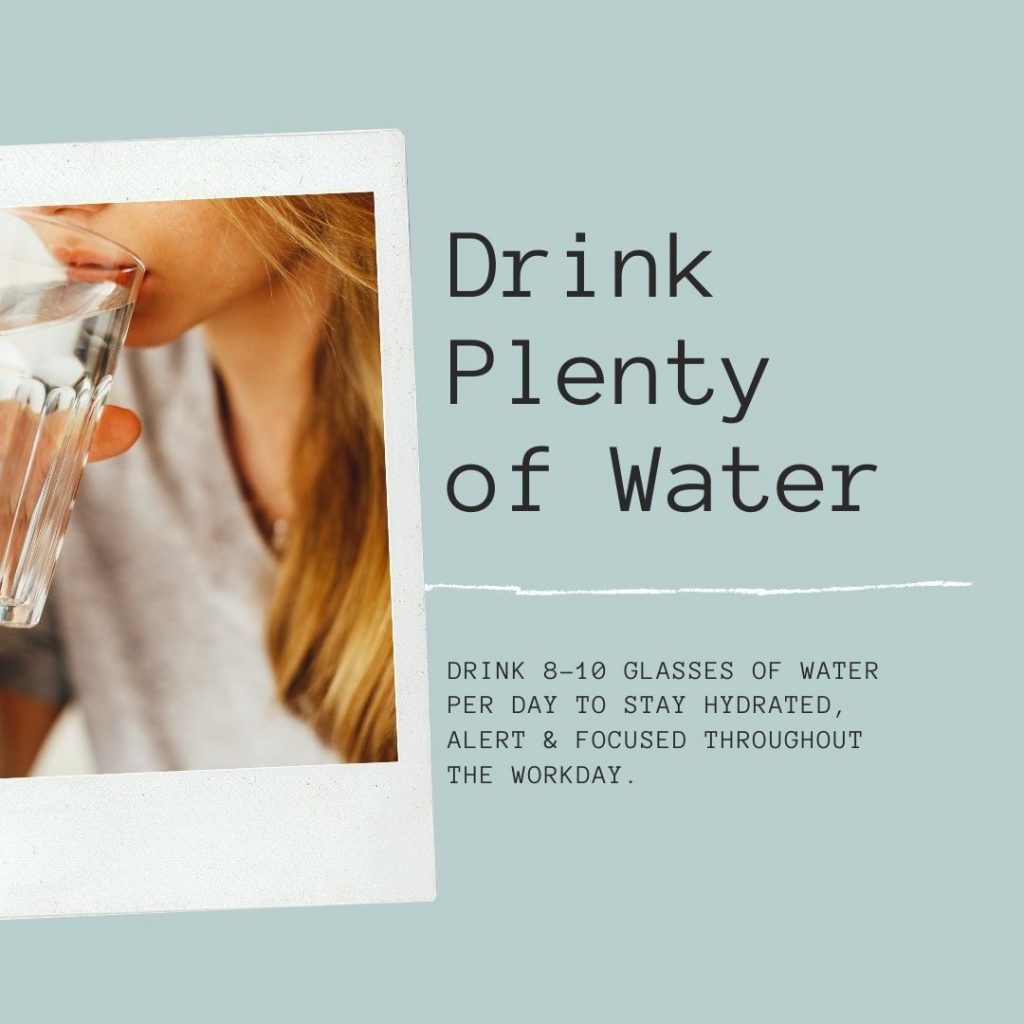
Water is essential for so many metabolic processes in our body and especially our brain. We need it to be able to properly function and thrive.
But what happens to your mind when you don’t get enough water?
You become dehydrated and essentially unable to work.
According to 101MrHealth the following ailments can all be a direct result of being dehydrated:
- Headaches
- Dizziness
- Cloudy mind
- Loss of concentration
- Irritability
- Lethargic
He continues to say that it is more so that our brain is dehydrated and that is why we experience these symptoms. It is a way of our body communicating with us that we need water.
When you drink enough water, your concentration improves. You are more alert, focused and think more clearly. Essentially, everything that you need in order to be highly productive.
So, how much water do you need?
Medical professionals say that we need an average of eight glasses of water per day. That is certainly a good starting place and it’s something that you should strive towards daily. However, keep in mind that this too varies depending on the type of activity that you’re doing.
For example, if you are exercising then of course you need more water so that you can replenish what you’ve lost.
But did you know that intense concentration also means that you need more water. So, if you want to be highly productive you need to make sure that you are drinking enough water throughout the day.
3. Alternate Between High and Low Activities
Some of the tasks that we do throughout the day can be considered low level activities, whereas others require more concentration and effort which would-be high-level activities.
Alternating between high and low intensity activities is like interval training for the brain.
savingsblogger.com
By alternating between these two types of activities what we are doing is giving our brain a rest. Essentially, allowing it to recover from a highly focused activity.
Low level activities can be anything from returning emails and phone calls, answering comments on your blog, getting caught up reading emails, etc. Whereas high level activities may be putting together your business plan, developing a marketing strategy, or even writing a blog post.
Just think of interval training where you are alternating between high and low activities, except here we are doing it for your brain.
4. Control Negative Thoughts
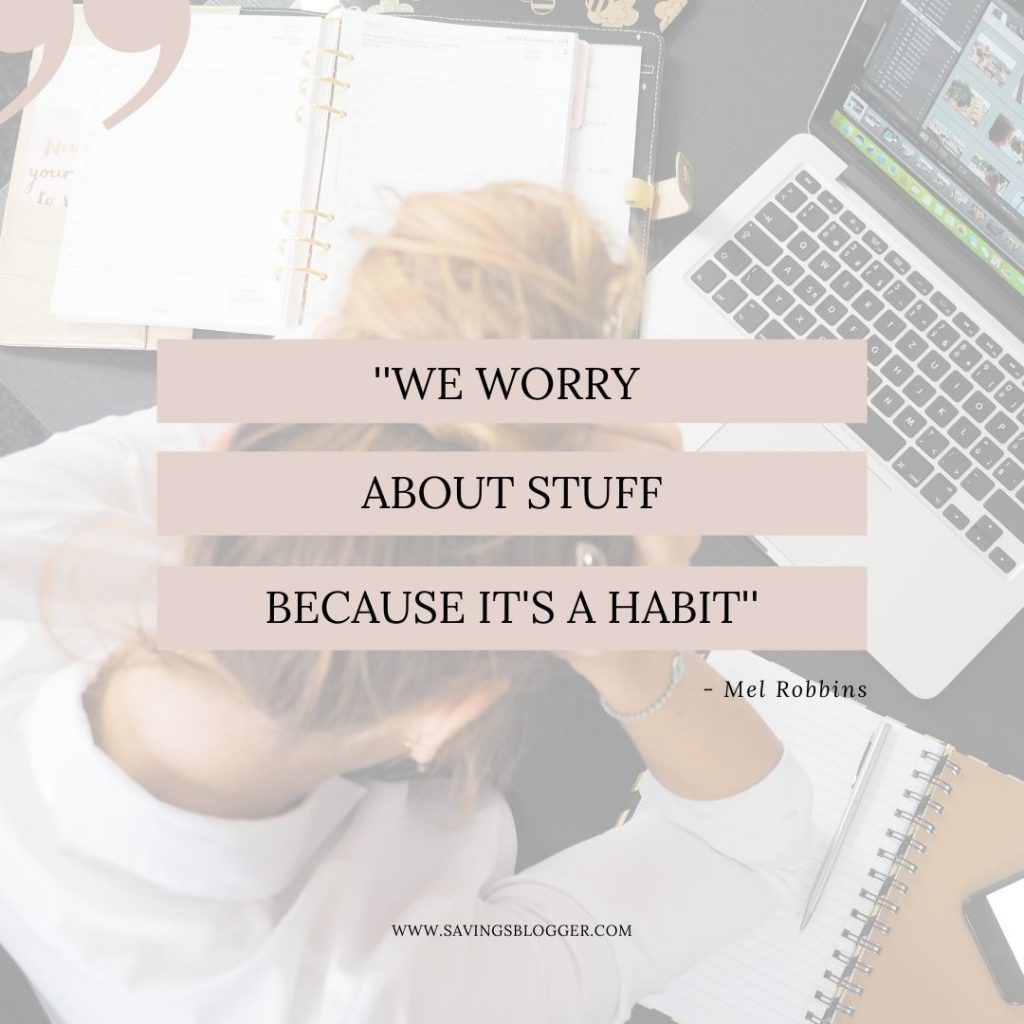
Does self-doubt and worry creep into your daily thoughts? Do you find yourself drifting and wondering if you can actually achieve all of your business goals?
Mel Robbins says that, “…we worry about stuff because it’s a habit, cause when you’re not paying attention your brain shifts from you being a decision maker and paying attention to you just spinning things on autopilot, and one of your habits is worrying…”.
Say the numbers
5-4-3-2-1 out loud.
mel robbins
But when you actually wake up and recognize that you are in this negative headspace, she says that you should say the numbers 5-4-3-2-1 out loud.
She continues…
What this does is shift the part of your brain that you are using. You move from your basal ganglia, which is where all of your habit loops occur to your awakened prefrontal cortex. Plus, you have interrupted the negative pattern.
Because of the counting your mind is now ready to receive a new thought. This can be a vision of your business as you would like it to be in the next five years, a positive mantra or thought that resonates with you, etc.
5. Work with Intention
The concept of working with intention means that you are working towards a specific objective, with an intended result that you want to achieve, in a specific amount of time.
Most people struggle with focus not because of their inability, but because they don’t understand or really know what it is that they are supposed to be doing. What is the end goal? The aim or objective? And when should it be completed by?
When you are creating your daily tasks, you need to attach a time frame to them. For example, if you are writing a blog post and on average it takes you four hours then block off that time in your calendar. You will most likely do this over a few days.
So, let’s say you will work two hours per day on your blog post. Assuming that you want to write 2,500 words that’s 625 words per session. Now decrease that timeframe to 1.5 hours.
That means that you need to produce 625 words in 1.5 hours. Your objective and time frame has been clearly mapped out. Now when you work on this task you know exactly what needs to be done, by when. You have given clear instructions to your brain and in turn it will do it’s best to deliver. That is working with intention.
If we go a step further, what we are really talking about here is Parkinson’s Law.
Parkinson’s Law states that the time it takes to complete a work project depends on how much time you allot for it.
Hansaj, Readwrite
According to Hansaj, from ReadWrite, “Parkinson’s Law states that the time it takes to complete a work project depends on how much time you allot for it. In other words, if you give yourself eight hours, you’ll slow down and make it take eight hours. If, however, you only give yourself five hours, you’ll block out distractions and get it done in five hours”.
6. Manage Tasks with To-Do Lists
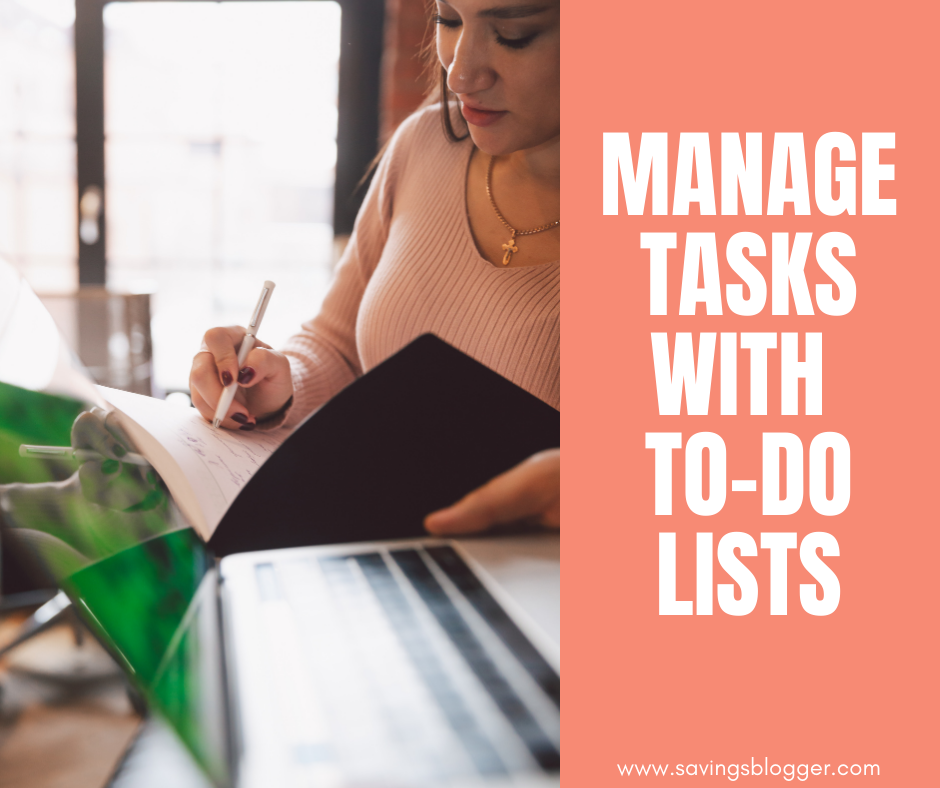
I absolutely love to-do lists. I can’t think of anything more satisfying than knowing that things are getting done.
While I do still use pen and paper with some task management, I do believe that using either a mobile or online app is the better way to go…at least for the overarching tasks.
Most apps allow you to prioritize by moving the tasks up and down, in some cases color coding for importance, and also setting them as completed. Plus, you can add tasks in advance which is helpful for deadlines and repetitive tasks.
Much of the stress that people feel doesn’t come from having too much to do. It comes from not finishing what they’ve started.
david allen
Brown cited Productivity Guru David Allen stating that, “Much of the stress that people feel doesn’t come from having too much to do. It comes from not finishing what they’ve started.”
He continues to say that he realized that if he could actually finish what he was working on then his to-do list would get shorter. Essentially, “do what you’re doing now” or DWYDN.
It’s so easy to avoid tasks that we don’t like or to simply jump from one task to another always trying to do the easiest one first. The problem with this is that nothing ever gets completely done and the to-list just keeps growing.
Helpful tips for working with to-do lists:
- Prioritize your tasks
- Add a timeframe to each task
- Alternate between low and high activity tasks
- Finish what you’re doing now (use the DWYDN method)
7. Track Your Time
Time tracking is a great way for you to understand where you are spending your time during the day. As well, it allows you to identify how long specific types of tasks are taking so that you can manage them more effectively.
My favorite time tracking tool is Toggl. It keeps me accountable so that I can continually be moving through my tasks.
Each of my projects is organized by tasks and color. For example, if I am working on a blog post I make sure to select that activity. While it does take some remembering to turn on and off the timer with each new task I start, it is well worth the effort. At the end of the week, I am able to pull a report that shows me exactly how I have spent my time.
Closing Thoughts
Productivity is the cornerstone of running a successful business. How well you spend your time matters. If you’re not getting enough done during the day, then you need to make a change right now.
Maybe you are working on one task for too many hours and losing your focus. If this sounds familiar, then try taking regular breaks throughout the day. Make sure to drink plenty of water so that your mind is alert and focused. Remember, loss of concentration, a cloudy mind, and irritability are all signs that you are dehydrated. All of which will negatively impact your productivity.
Make sure to alternate between the type of task that you are working on as some work require less intensity while others require more.
Create a to-do list and assign time frames for each task. And whatever the time frame tighten it up a bit so that you push yourself to achieve more in less time. And make sure to track your time so that you know exactly where and how you are spending your working hours during the day.

